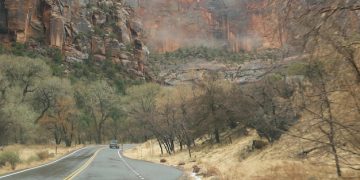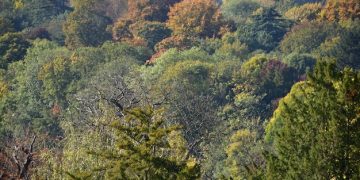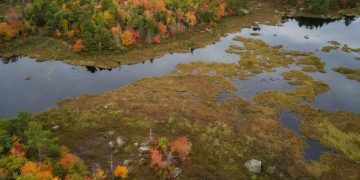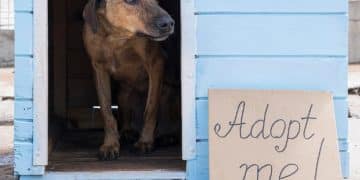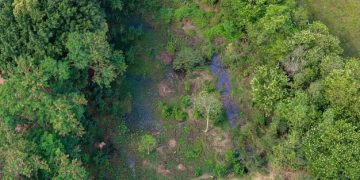Urban Development’s Impact on Wildlife Migration: New Research & Solutions
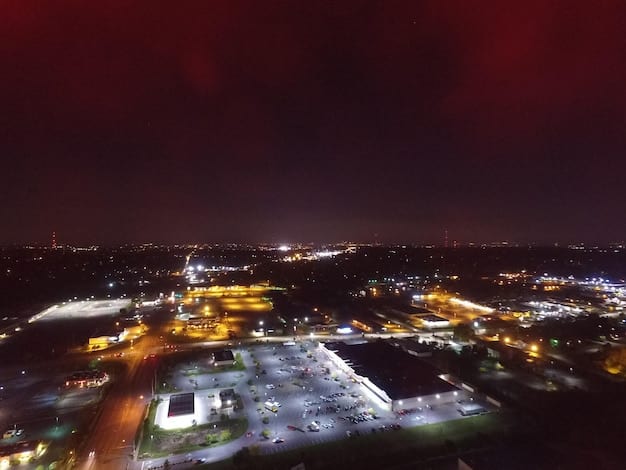
New research reveals that urban development significantly disrupts wildlife migration patterns, leading to habitat loss and increased mortality; however, strategic conservation efforts, including habitat corridors and green infrastructure, can mitigate these impacts and promote coexistence.
The relentless expansion of urban areas poses a significant threat to the natural world, particularly impacting wildlife migration patterns. New research reveals the profound consequences of urban development on these crucial animal movements, highlighting the urgent need for effective conservation strategies.
Understanding the Interplay: Urban Development and Wildlife
Urban development, driven by human population growth and economic expansion, is intrinsically linked to alterations in natural landscapes. These alterations can have far-reaching consequences, especially for species that rely on migration for survival. Understanding this interplay is crucial for developing effective conservation strategies.
The Expansion of Urban Footprints
Urban sprawl extends the physical boundaries of cities and towns, leading to habitat fragmentation. Natural areas are converted into residential, commercial, and industrial zones, diminishing the available space for wildlife.
Fragmentation of Habitats
The fragmentation of habitats creates islands of natural areas surrounded by urban development. This isolation can prevent animals from accessing resources, finding mates, and completing their natural migration cycles.
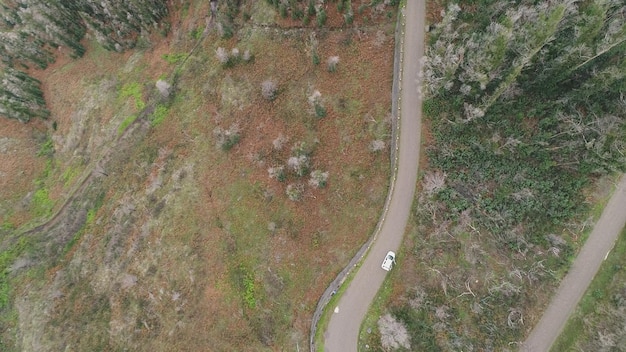
- Reduced Genetic Diversity: Isolated populations experience limited gene flow, increasing the risk of inbreeding and reduced genetic diversity.
- Increased Competition: As habitat shrinks, competition for resources like food and water intensifies, particularly impacting migratory species.
- Elevated Mortality Risk: Urban environments present numerous threats, including vehicle collisions, encounters with domestic animals, and exposure to pollutants.
In essence, urban development disrupts the delicate balance of ecosystems, placing significant pressure on wildlife populations. By recognizing the specific ways in which urban sprawl interferes with animal movements, conservation efforts can be tailored to address the most pressing challenges and mitigate the negative impacts.
The Impact on Migration Routes
Migration is a critical survival strategy for many wildlife species, enabling them to access seasonal resources, breeding grounds, and favorable climates. Urban development presents formidable barriers to these essential movements, affecting both the patterns and success of migration.
Barriers to Movement
Roads, highways, and built-up areas act as physical barriers, hindering animal movement. These barriers can prevent animals from reaching their destinations, disrupting their life cycles and reducing their chances of survival.
Altered Migration Patterns
As animals attempt to navigate urban landscapes, their migration routes may be altered, leading them to less suitable habitats or exposing them to increased risks.
- Increased Energy Expenditure: Detours around urban areas require animals to expend more energy, reducing their overall fitness and reproductive success.
- Higher Predation Risk: Altered migration routes may lead animals into areas with higher predator densities or increased human activity, elevating their risk of mortality.
- Disrupted Breeding Cycles: Delayed or disrupted migration can interfere with breeding cycles, reducing the number of offspring produced and impacting population growth.
Understanding how urban development disrupts migration corridors is vital for implementing effective conservation measures. By identifying critical migration routes and the specific barriers encountered by animals, strategies can be developed to facilitate safe passage and maintain ecological connectivity. Prioritizing habitat preservation and restoration, alongside the construction of wildlife crossings, can significantly improve migration success.
New Research Findings: A Closer Look
Recent research is providing valuable insights into the specific effects of urban development on wildlife migration. These studies employ diverse methodologies, from tracking animal movements with GPS technology to analyzing genetic data, offering a comprehensive understanding of the challenges faced by migratory species.
GPS Tracking Studies
GPS tracking has revealed that many animals avoid crossing roads and urban areas, even when these areas lie directly on their traditional migration routes. This avoidance behavior can lead to significant detours and increased energy expenditure.
Genetic Analysis
Genetic studies have shown that populations isolated by urban development exhibit reduced genetic diversity, indicating limited gene flow. This reduction in diversity makes these populations more vulnerable to disease and environmental changes.
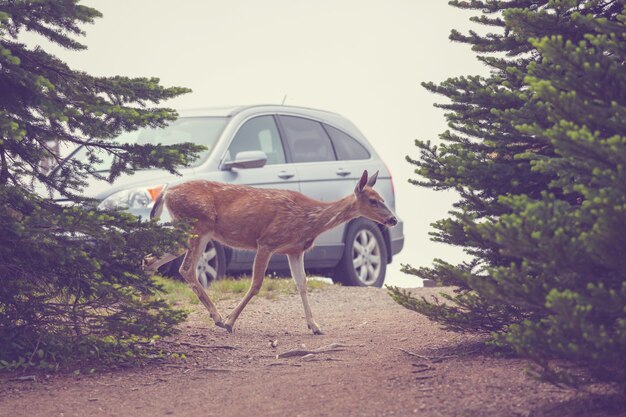
- Habitat Loss Drives Migration Changes: Studies highlight that habitat loss due to urban sprawl is a primary driver of altered migration patterns.
- Fragmentation Leads to Genetic Bottlenecks: Research demonstrates that fragmentation leads to reduced gene flow, resulting in genetic bottlenecks in isolated wildlife populations.
- Mortality Rates Correlate with Urban Density: The data confirms a strong correlation between urban density and increased mortality rates for migratory species due to vehicle collisions and habitat degradation.
By gathering and analyzing this data, researchers are identifying the most critical areas for conservation and informing the development of effective mitigation strategies. These findings underscore the importance of integrating wildlife conservation into urban planning and development processes to ensure a sustainable future for both humans and animals.
Solutions: Mitigating the Impacts
Addressing the negative impacts of urban development on wildlife migration requires a multifaceted approach that integrates conservation principles into urban planning. Several strategies have proven effective in mitigating these impacts and promoting coexistence between wildlife and humans.
Habitat Corridors
Establishing habitat corridors—protected areas that connect fragmented habitats—is crucial for facilitating animal movement. These corridors provide safe passage for animals to access resources and breeding grounds.
Green Infrastructure
Incorporating green infrastructure, such as green roofs, urban parks, and vegetated waterways, into urban landscapes can create refuge for wildlife and enhance connectivity.
- Wildlife Crossing Structures: Constructing wildlife crossing structures, such as overpasses and underpasses, allows animals to safely cross roads and highways.
- Reducing Road Mortality: Strategies include fencing along roadways, slower speed limits in critical areas, and reflective markers to alert drivers to the presence of wildlife.
- Land Use Planning and Zoning: Incorporating wildlife habitat considerations into land use planning and zoning regulations can help minimize the impact of urban development on migration patterns.
These solutions require collaboration between government agencies, conservation organizations, and private developers to ensure their successful implementation. By prioritizing biodiversity and ecological connectivity in urban planning, it is possible to create urban environments that support both human needs and wildlife conservation.
Case Studies: Successful Conservation Efforts
Numerous success stories demonstrate how targeted conservation efforts can effectively mitigate the impacts of urban development on wildlife migration. These case studies provide valuable learning opportunities and highlight the potential for positive change.
Banff National Park, Canada
Banff National Park in Canada has implemented an extensive network of wildlife crossing structures along the Trans-Canada Highway. These overpasses and underpasses have significantly reduced wildlife-vehicle collisions and facilitated safer animal movement.
Yellowstone to Yukon Conservation Initiative
The Yellowstone to Yukon Conservation Initiative is a collaborative effort to maintain ecological connectivity across a vast landscape spanning the United States and Canada. This initiative focuses on protecting and restoring habitat corridors, enabling wildlife to migrate freely across the region.
- Amsterdam’s Green Infrastructure: Amsterdam’s integrated green infrastructure has enhanced urban biodiversity.
- Berlin’s Wildlife Management: Berlin’s targeted wildlife management effectively mitigates habitat loss effects.
- Singapore’s Eco-Link@BKE: Singapore’s Eco-Link@BKE has successfully reconnected fragmented habitats.
These case studies highlight the importance of long-term commitment, stakeholder collaboration, and adaptive management in achieving successful conservation outcomes. By learning from these examples, communities can implement similar strategies to protect wildlife migration in their own regions.
The Future of Coexistence
The future of wildlife migration in the face of urban development depends on proactive planning, innovative conservation strategies, and a shift in mindset toward coexistence. By recognizing the inherent value of wildlife and integrating their needs into urban environments, it is possible to create a sustainable future for both humans and animals.
Sustainable Urban Planning
Adopting sustainable urban planning practices that prioritize green spaces, protect critical habitats, and facilitate ecological connectivity is essential.
Community Engagement
Engaging local communities in conservation efforts, raising awareness about the importance of wildlife migration, and fostering a sense of stewardship can promote long-term support for conservation initiatives.
- Technological Innovations: Advancements in GPS tracking, remote sensing, and data analytics have enhanced our ability to monitor wildlife movements and assess the impacts of urban development.
- Policy Development: Implementing policies that require environmental impact assessments for development projects, protect critical habitats, and promote wildlife-friendly infrastructure can ensure that conservation considerations are integrated into decision-making processes.
- Habitat Restoration and Expansion: Focused efforts on restoring degraded habitats and expanding green spaces within urban areas can provide additional refuge and resources for migratory wildlife.
By working together, policymakers, scientists, conservationists, and communities can chart a path towards a future where urban areas and wildlife coexist harmoniously, ensuring the long-term survival of migratory species.
| Key Point | Brief Description |
|---|---|
| 🚧 Urban Sprawl | Expands city boundaries, reducing wildlife habitats. |
| 🛤️ Habitat Corridors | Connect fragmented habitats for safe animal passage. |
| 🌉 Wildlife Crossings | Overpasses/underpasses help animals safely cross roads. |
| 🌿 Green Infrastructure | Urban parks and green spaces enhance wildlife refuge. |
FAQ
▼
Wildlife migration is the seasonal movement of animal populations from one habitat to another in search of resources, breeding grounds, or more favorable climates.
▼
Urban development fragments habitats, creates barriers like roads, and reduces available resources, disrupting migration patterns and increasing mortality risks.
▼
A habitat corridor is a protected area that connects fragmented habitats, providing safe passage for animals to move between different areas.
▼
Wildlife crossing structures, like overpasses and underpasses, allow animals to safely cross roads and highways, reducing vehicle collisions and maintaining connectivity.
▼
Green infrastructure includes urban parks, green roofs, and vegetated waterways that provide refuge for wildlife and enhance ecological connectivity within urban areas.
Conclusion
Addressing the challenges posed by urban development to wildlife migration patterns requires integrated strategies that encompass habitat preservation, green infrastructure, and community engagement. By prioritizing biodiversity and implementing innovative solutions, it is possible to foster coexistence and ensure a sustainable future for both urban areas and migratory species.
